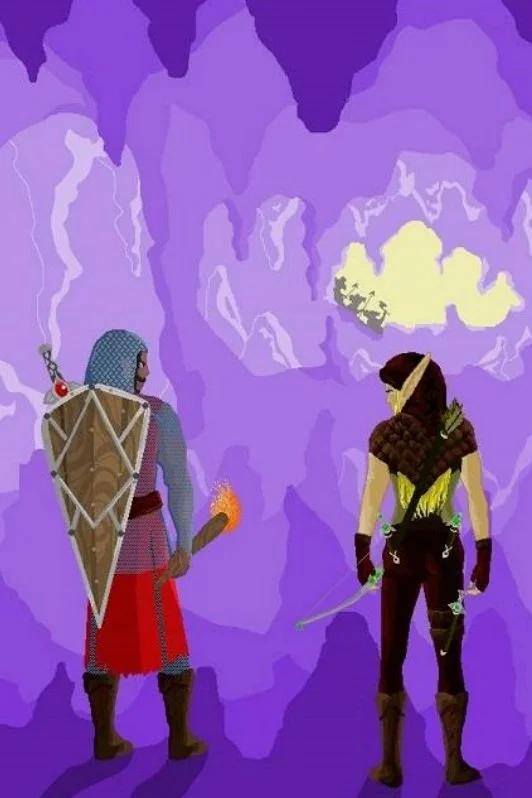This week I reviewed the in development TRPG Spelunk by Mike Head. Exploration is at the heart of Spelunk, while combat is the structure that holds it together. With just those two tidbits you may write this off as another Dungeons and Dragons clone, but there is a third part to this game. “Explore. Die. Try Again”
Art by Amalia Bowens and Aaron Mills
I apologize for the absence from posting these. I got caught up with my computer arriving and then rewriting the rules of my game for the QuickStart coming in November. Onto the review.
After talking with the designer about the core intent of the game, I confirmed that the three pillars of the game are exploration, combat, and persistence/rewards for dying and making a new character aka “Try Again”. These are the important points that I will touch on in this review. For those that have followed along with the other reviews, I am looking at this game with a Player focus, so it is getting ready for external play testers.
Let’s start with “Explore”. Spelunk delivers on the exploration mainly in character options. The races are very well narratively expressed through their mechanics and the classes have a deep array of options. A bestiary will be coming soon which will really add to the depth of the exploration. (Note: If you want to see me write more about delivering exploration in TRPGs message me; I have ideas)
“Die” is the next pillar. I was expecting a bit more here when I read the section. The basics are you lose stamina, then gain wounds. Each wound gained increases the chances you will face mortality. The game seems a bit slightly more on the deadly side than the heroic side, but I wont know for sure unless I can see it in game.
The last pillar “Try Again” felt unfulfilled in the parts that I read. My talks with the designer revealed that the goal was the character creation was supposed to be quick so that it would encourage players to quickly get back into playing. The problem I have is that usually a player’s first or second character is the class and race combination they want to play the most. While there are numerous combinations in Spelunk that can support wanting to try many different characters, the magic a player experiences playing their 5th character is much different than their first. I brought up more constructive advice with the designer so instead I want to use the rest of this blog post to talk about ways to implement the “Try Again” aspect for any reader that might be interested in that for their games.
What kind of ideas do you expect when you hear “Try Again”? For me, it is roguelike games, Groundhog Day, a new body but the same character. In all of these examples I imagine a progression system that either comes from death or is persistent through death. Sure, everything related to your character is lost when they die, but maybe now you know more skills than before, or you know the piece of the puzzle you didn’t before. For C22 I would approach this by making the deck reset and items lost on death, but skill points would carry over between characters. The passing of experience but the resetting of the body. For Spelunk, I would probably award more karma for each death, and expand the karma system to allow it to be used in character creation to buy extra skills or Attributes. Furthermore, I would explore some death related progression as well. Maybe depending on how you died, I would give unique skills or passive abilities that would help you on all subsequent characters. That would fulfill the exploration pillars as well by giving a way to explore “dying”. As long as the ways that you die, and the benefits they grant are not known to players beforehand.
Narratively, how would we represent this ability to “Try Again”? I think of spirits, a resurrection cycle, or remote-controlled robots. In this fantasy setting, the character’s spirit could be bound to a place and resurrected after each death. Or the character’s spirit might just be able to leave the dying body and inhabit another somewhere else. Another example, you could have a dungeon that you must complete within a day and or be killed or kicked out. In this way the players that did not die and those that did, would be able to retry each day. If the game was more futuristic, you could skip the actual “death” aspect all together and just have the players be controlling machines that when they die, you grab a new machine body instead. What are some of the things you envision for “Try Again”?
Spelunk is gearing up to be played soon, but unlike the other games I reviewed, this game will mainly remain a hobby project and does not intend to be released. If you are very interested in playing it, I can try to connect you to the designer, just reach out to me. If you like what I am doing or have any other game topics you want me to talk about. I have three design subjects I want to touch on eventually: exploration in ttrgs, Role vs Roll, and a study on dice.
Message me in the comments, join my discord, or @c22system on Twitter.


